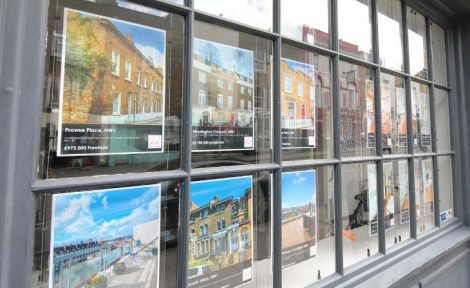TOWN AND CITY TRACKER: House price rises ‘unusually high’
House price expert, Kate Faulkner, analyses the latest data, revealing double-digit growth in some regions according to figures from the Land Registry.
 The Land Registry continues to show some unusually high annual increases, with double-digit house price growth still being reported in locations such as Newcastle and Liverpool in the North and Tunbridge Wells in the South.
The Land Registry continues to show some unusually high annual increases, with double-digit house price growth still being reported in locations such as Newcastle and Liverpool in the North and Tunbridge Wells in the South.
These spikes are largely a result of the surge in transactions during the first quarter of the year, as buyers rushed to complete before the end of the temporary Stamp Duty Land Tax (SDLT) holiday.
In contrast, Hometrack’s data paints a more grounded picture:
– Strong growth is concentrated in more affordable cities, where price-to-income ratios remain accessible.
– Slower growth or small declines are evident in less affordable locations, including Oxford, Reading, Bournemouth, Brighton, and London.
– Interestingly, weaker performance is also seen in Leicester and Norwich, despite fewer affordability pressures, while Aberdeen continues to experience falling values due to its local economy’s reliance on oil, with prices still depressed following the energy market downturn.
![]()
Rental growth outpacing property price growth
Property price changes range from -1.1% in Aberdeen to +6.6% in Belfast, underlining the wide variation in performance.
On the rental side, ONS data shows that annual rent changes vary from -1.1% in Bristol to +11.5% in Gloucester, followed closely by +11.1% in Oxford.
Since 2015, average annual rent growth has been more consistent, typically between 1.2% falls in Aberdeen and 5% annual rises in cities such as Glasgow, Cardiff, Manchester, Leicester, and Bristol.
One of the most striking trends is that private rental inflation is now consistently higher than property price inflation:
– Property prices have averaged growth of around 3% annually since 2005.
– Rents, however, which used to rise at around 2% per year, are now increasing at around 4% annually.
This shift is partly due to a shortage of available rental stock and government restrictions on the expansion of the Private Rented Sector (PRS) since 2016, which have constrained supply and pushed up rents.
For the first time, we are in a period where annual rental inflation (+4%) exceeds property price inflation (+3%).

House price changes vs general inflation
With general UK inflation currently running at 3.6%, most cities are seeing rents rising faster than inflation, while house price growth is lagging.
Based on Hometrack’s data across 30 cities:
– Only Belfast is experiencing property price growth above inflation.
– Bradford (3.4%) and Liverpool (3.3%) are close but remain just below.
– This means that in real terms, property prices are falling.
This is consistent with the Nationwide index, which shows that since the 2008 financial crisis, house price growth has generally tracked at or just below the rate of inflation.

Appendix: City/town property indices price tracking
For city/town tracking, we use Land Registry (government data) and Zoopla/Hometrack. The Land Registry data is useful because we can analyse how property prices have changed over time and this helps us to put today’s price information into context.
The Zoopla/Hometrack data is useful as they take into account the change in mix of property transactions during the pandemic to houses away from flats. This has meant the likes of the Land Registry and other indices have over exaggerated price changes year on year.










